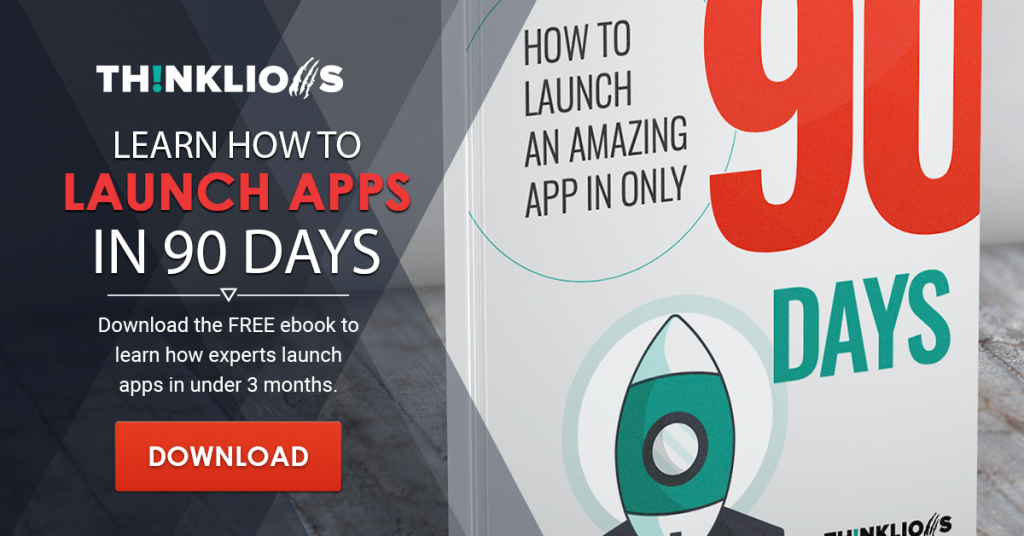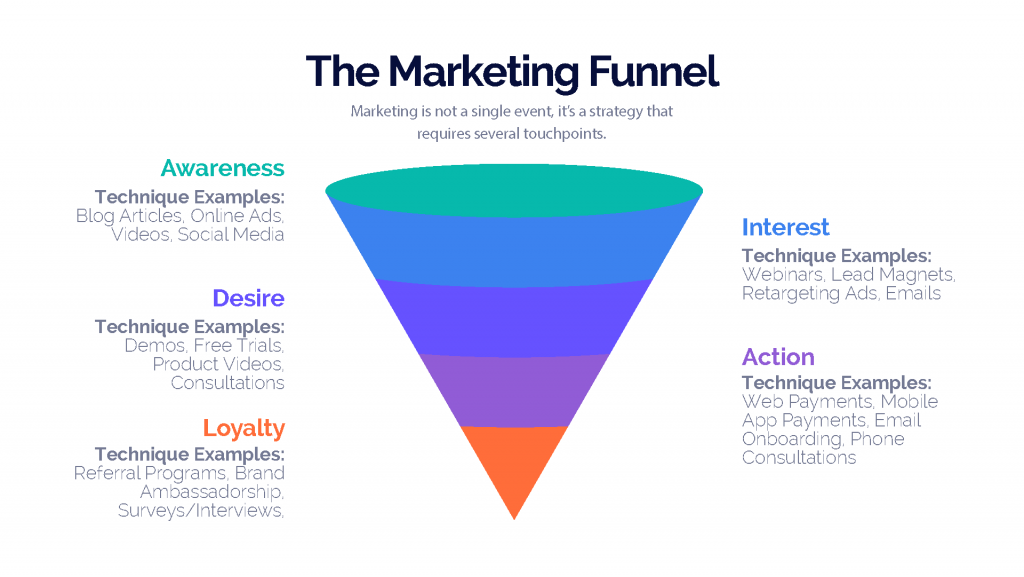Millions of people share a dream of launching a successful startup one day. Unfortunately, most of them won’t even take the first step. According to statistics, the majority of entrepreneurs will fail in the first year. Launching isn’t enough – if you don’t launch the right way, it could quickly spell trouble for your startup. Often, the things we know about launching startups are the same things that hold us back. Unfortunately, the superficial startup tips you’ll receive from your online search may not move you closer to success.
At ThinkLions, we know a thing or two about launching startups. Over the last decade, we’ve worked with over 500 startups, helping them bring innovative products to market and creating investor packages that have secured more than $50 million in seed and series funding. When it comes to our clients, there are three essential startup tips we offer them – and in this article, we will share them with you, too!
Startup Tip #1: Don’t Obsess Over Funding
Ask any should-be entrepreneur what is holding them back from launching their business, and 80% of them will give you the same answer – a lack of funding. Of course, bringing a startup to the market will require some funding, but not nearly the amount that most people think.
If you think every successful founder had tens of thousands of dollars in the bank or wealthy investors backing them on the day they hit the market, you’d be wrong. Some of today’s most successful businesses started their companies for hundreds, not thousands, of dollars. For example:
- Mark Zuckerberg coded the initial version of Facebook in his dorm room.
- Airbnb’s founders started with a simple landing page, not a full-blown platform.
- Groupon’s founder started the business with a single group deal for a pizza restaurant and an email list.
- Zappos began operations with a simple website and no inventory.
- Dropbox started with an explainer video – not a sophisticated platform.
Do You Need Funding Now?
The bigger your offering, the more funding you need. But no one said you had to start big! Today’s largest and most well-known startups don’t start with complex solutions, massive marketing strategies, and extensive inventories. Instead, they began with what they had, validated their solutions, earned their first revenue, and by the time they needed funding to scale their products, investors were already beating down their doors!
Capital can’t replace creativity. Having access to too much money too early can backfire. Some startups receive millions of dollars in funding early on, and instead of helping them grow, it pushes them down the wrong path even quicker. For example, FAST received over $120 million in funding early on, and a year later, they were already closing their doors. In the beginning stages of your startup, more funding isn’t the answer to the obstacles you face.
When Is Funding Necessary?
There is a caveat here, though. Some businesses do have enormous startup costs. For instance, before launching a nursing home, you will need a physical space, equipment, licenses, staff, and several other components just to begin operations. But suppose you’re launching a software startup. In that case, you don’t have to build out every feature to provide value to your customers and validate your solution – you only need a minimum viable product with the core features. And if you’re launching a physical product, you don’t need 10,000 units; you just need a few prototypes to get started.
Funding isn’t for the idea-stage startup. Instead, the most effective time to seek financing is after the experimentation stage – after you’ve put something on the market, validated that there is a market for it, and proven that customers are willing to pay for it. Once you have data proving what customers need and you’re in the position to scale the business, funding becomes easier to secure.
How To Build Products Without Funding
There’s no doubt it would cost millions of dollars to build Facebook, considering what it is today. But it didn’t cost anything to create Facemash – the initial version of the platform. In the earliest stages, the goal isn’t to build a beautiful, complex product that solves every challenge your customers face. The real goal is to get something on the market to start collecting data and generating insights to help you decide whether you’re on the right track or should pivot your idea.
There are many ways you can enter the market without overspending on product development. For example, you can:
- Validate ideas and generate revenue (pre-sell) using landing pages before building the product.
- Use open-source code to minimize the amount of custom coding.
- Use 3D printing to create prototypes of physical products.
- Integrate APIs from third parties to enhance functionality with little coding.
- Launch a crowdfunding campaign and earn revenue before building the product.
These strategies allow you to get an initial product built and on the market quickly and without the typical expense of custom product development.

Startup Tip #2: Assume Your Assumptions Are Wrong
In the history of startups, there has never been an entrepreneur that launched a product that they thought no one would want. However, of all failed startups, 35% of them fail because there is no market need, according to studies by CBInsights. These businesses assumed that customers wanted one thing, launched it, and later found out that their assumptions were incorrect. And by the time they came to this realization, it was too late to recover.
No matter how well you think you know what your customers want, it’s just an assumption until you validate it. A critical step in any startup journey is the market research stage, where you take the time to learn and understand everything about your customers. Ultimately, entrepreneurs don’t dictate what the market wants – the market dictates what they want. As an entrepreneur, you can make changes to your product and even decide to target a different market, but you can’t change what the market wants. You can’t change their experiences, backgrounds, or expectations – and you definitely can’t make them buy something they don’t want.
It is dangerous to build products based on unvalidated assumptions. Having experience in an industry doesn’t mean you know what customers want. For example, construction workers are most likely to create a product based on the challenges individuals face while working in the construction industry. But just because YOU face a particular challenge and think it warrants a solution doesn’t mean everyone else in the industry seeks the same solution.
No matter how many statistics you found on Google about your market, if you haven’t interviewed, surveyed, and engaged with them, then you don’t know anything about them.
An Example of Bad Product-Market Fit
SchoolGennie is a good example of a business that failed due to a lack of product-market fit. The Company was supposed to improve child development by providing school-based management solutions. Initially, they launched their flagship product – an Electronic Records Portal that provided Competitive Edge Software and Cloud Software Services.
In 2013, the Company seemed to experience significant growth. But just a year later, they were already announcing their closing plans. Unfortunately, they failed to validate their idea and understand their market. Quickly, they found that schools weren’t interested in what they were offering. First, they lost money and time trying to delay the product’s release, hoping to perfect fit. Then, in a last-ditch effort, they tried to copy competitors and duplicate other solutions’ features.
Ultimately, the product failed in the market. Since the company spent all of its money developing the initial platform, it didn’t have enough capital left to pivot into an idea better suited to its audience.
How To Learn About Your Customers
Startups operate differently than established businesses or new small businesses. The goal of a startup is to experiment constantly, learn everything there is to know about its customers and continue to iterate on its offering until realizing the optimal product-market fit.
When clients ask how to launch a startup, my first question is, “Have you asked your customers what they want?” More often than not, the answer is no. Or, they’ll link some report that shows an expert perspective of how the market will perform in upcoming years. Secondary research is necessary, but it’s not enough. Primary research is gold for new startups. When you develop systems and approaches to generate data and feedback from your customers, you’ll learn first-hand about their experiences, needs, and demands.
Customer Research Techniques
There are three ways you can quickly generate data about your target audience:
- Customer Interviews: This qualitative research technique allows you to ask your target market about their situation, the challenges they experience, and their difficulty with current solutions. The benefit of customer interviews is getting right in front of your potential customers to figure out exactly what they are looking for and what inspires them to make purchases. However, customer interviews generate personal narratives, quotes, and anecdotes, and you may find it challenging to analyze answers and recognize patterns.
- Customer Surveys: As a quantitative approach, customer surveys allow you to quickly ask focused questions to many prospects. Since you are dealing with numbers, it is much easier to recognize patterns. However, surveys require large sample sizes to ensure statistically relevant answers.
- Experimentations: You can learn much about your customers by utilizing a minimum viable product (MVP), analyzing customer behaviors, and using the data to iterate your product. The benefit is you get accurate information and can even begin earning revenue. But unfortunately, developing an MVP will require a larger budget than customer interviews and surveys.
Ultimately, you want to use all of these techniques and generate the most meaningful data. It’s important to note that research is not a one-time activity. Successful startups constantly engage with their customers and prospects through these techniques and never stop improving their products.
Startup Tip #3: Marketing is Key
Even if you know everything about your market and have the perfect solution to their problems, it doesn’t guarantee startup success. It doesn’t even guarantee that you will receive a single purchase. Of course, you might get some traction from single promotions – such as having a viral Reddit post or posting a video on Instagram that gets shared a million times. But in the long-term, you’ll need an effective marketing strategy that introduces prospects to your products, generates leads, nurtures them, and converts them into paying customers.
Furthermore, marketing isn’t a single event; it’s a strategy. Many entrepreneurs unwisely believe that a single marketing channel is enough or that a client will purchase just because they clicked an ad or received an email. It usually takes multiple touchpoints between when a prospect learns about a product and when they make a purchase.
It’s a mistake to believe the old saying, “If you build it, they will come.” Actually, if you build it and don’t do anything else – they won’t come; they’ll just go to your competitors. One of the core parts of knowing how to launch a startup is knowing how to promote one.
Understanding the Marketing Funnel

There are five steps to the marketing funnel, and a proper startup strategy will have the optimal techniques installed at each stage. These steps include:
- Awareness: Awareness is the stage of the funnel where a prospect becomes aware of a brand and its products.
- Interest: In the interest stage, prospects learn more about the company and become interested in the products as a potential solution to their challenges.
- Desire: When customers begin showcasing interest in buying a brand’s product, they enter the desire stage. Sometimes brands will push them into the action stage by offering special deals and discounts.
- Action: This stage is defined by a customer taking action, such as making a purchase. In the action step, brands must ensure customer satisfaction to establish a positive reputation and build their retention rate.
- Loyalty: The loyalty step is where customers showcase their devotion to a company by acting as brand ambassadors and referring the product to their peers.
Choosing A Marketing Channel
There are dozens of marketing channels brands can adopt, including online channels like social media, search engine marketing, and online ads, and offline channels like billboards, magazine ads, and television commercials.
Check out our video, “3 Digital Marketing Trends You Need To Know About” to learn about some of today’s most effective online marketing techniques.
The Most Important Step For Launching A Startup
Not knowing how to launch a startup causes a delay for most new entrepreneurs. It’s the number one reason thousands of amazing concepts never make it to market.
The most important step for launching a startup is just to LAUNCH. Don’t seek perfection; seek progress. You don’t have to hit the market with the prettiest product – you need to launch a product, get customers to it, collect their feedback, and continue iterating until you have the optimal product-market fit. Start with generating data (interviews and surveys), then launch a low-fidelity prototype or a first-version MVP. Talk to as many customers and prospects as possible, and ensure you understand what pains them, who influences them, and where they spend their money.
The quicker you establish product-market fit, the more rapidly you will generate traction. Then, after validating your concept, you can seek investors to fund the product’s expansion.
When you get to that point, ThinkLions is here for you. Contact us to speak to one of our expert consultants and learn how we can help you create world-class business plans and pitch decks that attract angel and VC investors.







